Regular WatchTime reader and watch aficionado Rich Tyson, our special guest blogger, contributes this very different review of one of his own favorite timepieces, the Rolex Air-King Ref. 14010, in which he and a trained watchmaker each examine the watch from their own POV.
The Rolex Air-King is a “time-only” watch that Rolex has offered since 1945. It was named by Rolex founder Hans Wilsdorf, who wanted to honor the British Royal Air Force that was so highly regarded after returning from their missions in the 1930s. Rolex at one point offered an entire line of “Air” models, yet only the Air King remains. At 34 mm in diameter, it is the smallest watch in the Rolex family of men’s watches. While many men today would scoff at a 34-mm wristwatch, the Oyster case adds a beefiness to the piece that makes it appear larger. If you are like me, you enjoy watches with history and ones of typical vintage sizes.
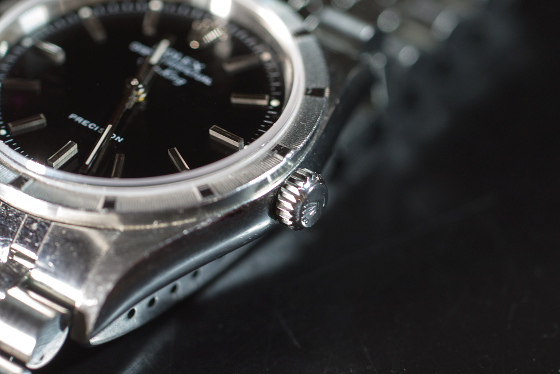
I find myself in an exciting time in my watch collecting life. I was once a quantity-over-quality guy, grabbing anything that was different than what I already had, and often the bigger the better. What changed my entire mindset was inheriting my great grandfather’s Bulova manual-wind wristwatch, possibly to be discussed in a future article. I brought the watch to Dave Kuyt, who I had known since high school and whose family owns and operates a watch-and-clock repair business here in Rochester, NY. After an overhaul and a ton of education about proper ownership of a manual-wind piece, I set off to try it out. What I found shocked me: wearing a 34-mm timepiece that needed daily attention to stay the reliable timekeeping course was a fantastic feeling. Adding to that the realization that my great grandfather had done so with the same piece, as did my grandfather and, for a period of time, my father; the sentimental history of that piece; and finally the feeling of interacting with a watch as a machine — it all changed me entirely. I was hooked.
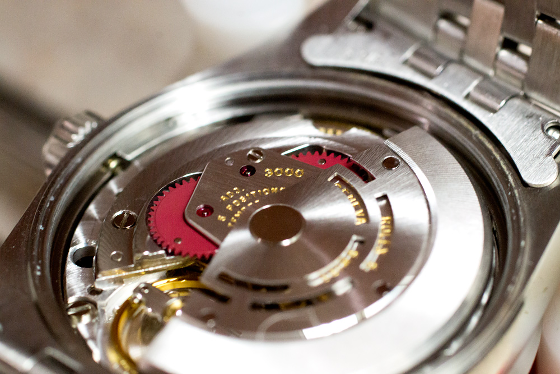
That brings me to the piece to be discussed today. Like many guys out there, I wanted a Rolex for all of the reasons that most of us want a Rolex. The one I had decided would be my first was a silver-dial Rolex Datejust with the jubilee band. As a real estate agent, I check the date more often than I check the time, so the Datejust seemed a solid choice. We all know what happens to plans, though: they change. I was presented the opportunity to purchase instead this Rolex Air-King, a model I’d never before considered, earlier this year. It turned out to be much closer to the Rolex I really wanted, and even came with box, papers, and original bill of sale.
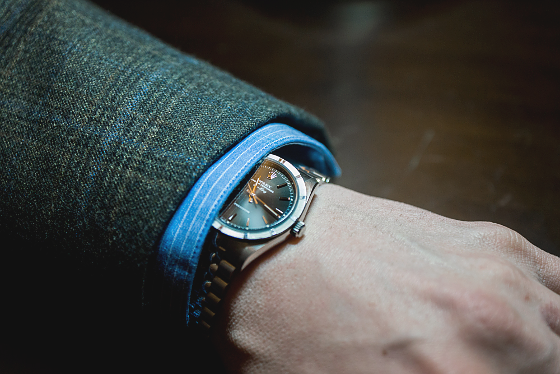
Aesthetically speaking, I love the watch. Though 34 mm, it wears a bit larger yet still feels comfortable under the sleeve of a dress shirt. It is as much at home on my wrist in a suit, as it is with a polo shirt during summer. Not the same can be said for all watches measuring 36 mm or less, including my Bulova. The thickness of the Oyster case and Jubilee bracelet really give it the wrist presence the watch needs to be as versatile as it is. There is even more to love about the the Oyster case and steel Jubilee bracelet. Having a year-and-a-half-old daughter with me full time, you can imagine what gets thrown at me during a given day, literally and figuratively. Whether washing bottles, changing diapers, feeding or bath time, I know this watch can take it. It is a very comforting feeling not having to take it off or be extra cautious with it during the day. Also, the fact that it is in steel and can be easily polished gives me peace of mind if I happen to I smack it into a door frame while showing houses or subject it to any of the other abuses it faces in a given day.
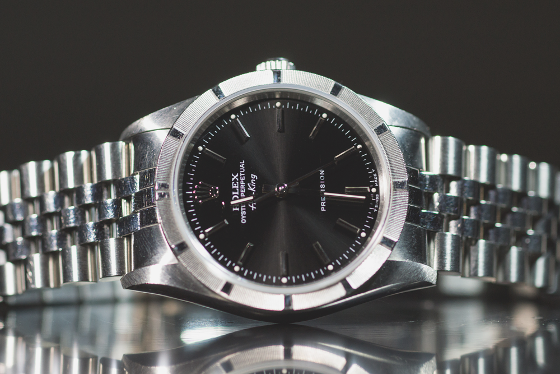
Lastly, as I noted above, I enjoy the history of a piece, both individually and within a model line. The Rolex Air-King has a lengthy and unique history. Having been in the U.S. Navy, and specifically in the aviation field, I appreciate the roots of the Air King. Anything designed to honor the military wins in my book, and this piece does so without making it the focus.
Rich’s Aesthetic breakdown:
Comfort/Versatility: 1-5 (1= extremely comfortable/Versatile 5=Not very comfortable/versatile)
- Score = 2. Very comfortable in any condition, though the lack of a date function dings it a bit for me
Durability: (1= Durable 5=Not as Durable)
- Score = 2. It’s a Rolex in an Oyster case with steel Bracelet and shock absorbers on the movement. With that said, it is a balance-wheel movement so it isn’t as durable as quartz.
History/Historical Significance: (1= A model/piece with history 5= Not significant from a historical viewpoint)
- Score = 2. Long history, though not as significant as other Rolex models
But this is just part of the story. What I would like to provide next is the viewpoint on this particular model from the guy who is going to maintain this piece for me going forward. Enter Dave Kuyt, certified watchmaker.A few points that will be wrapping up Dave’s portion of the article are: Cost of Maintenance, Ease of Maintenance, Frequency of Maintenance, and Build Quality.

Starting off with the bracelet, Dave indicated a few points of interest, some of which I had never considered, though will be doing so as I make additional purchases in the future. This Jubilee bracelet is connected with screws (as opposed to pins) as seen below. Dave explains that the benefit of screws vs. pins is that screws are stronger and show that quality was a top priority in design of the time piece. With that said, he noted that many of the modern watches he sees with screws on the bracelet easy strip out. Do take note as to whose screws you are looking at. The type of screws used on this Rolex are slotted, which allows a watchmaker the opportunity to polish and restore them in the event of wear and tear. It also affords the opportunity to minimize replacement parts for those of us who favor original parts and condition. Speaking to the clasp of this watch, it lacks the safety often found on the professional models available at Rolex. Though that option is imperative on the sports models, it does present an opportunity for increased maintenance costs as it requires additional attention at your time of service. Lastly, the clasp features the fine adjustment option, as seen below, which Dave says creates a more comfortable sizing for his clients. It is almost impossible to not find a size option that will fit one perfectly.
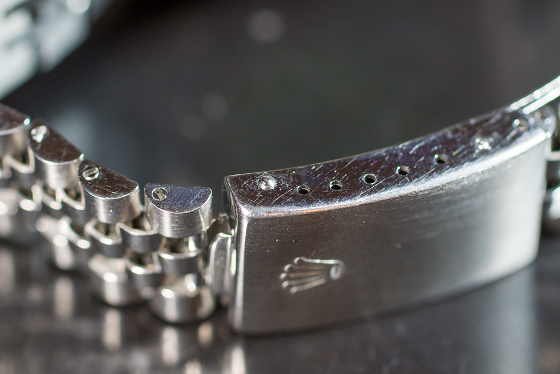

On to the case of this watch, the aforementioned, and famous, Oyster case from Rolex. Dave indicates that Rolex Oyster cases are the best he has seen in the business. They are extremely easy to open and close, and Dave says he’s never had an issue with cross-threading of the case back. They also use a common dye, which makes it easy for your watchmaker. The case on this particular model features a fixed bezel. Dave explained that the fixed bezels are much easier to maintain and present less opportunity for issues to arise. Lastly, this Air-King features a sapphire crystal, which is the most desirable from a durability standpoint.
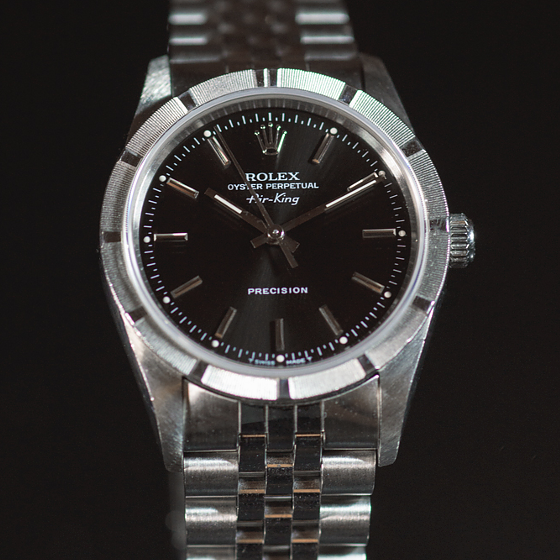
This particular models features a black dial, which can potentially add to the cost when overhauling the watch. Why, you ask? Because black, unlike white or silver, shows everything. The smallest speck or smudge shows clearly. It is always the goal of a watchmaker to have everything as clean as possible, but inevitably the black dials show more than lighter colors. Some will take that into consideration when pricing an overhaul. Now let’s really get into the weeds and move on to the movement itself! This Rolex Air-King contains Caliber 3000, as pictured below. One thing that Dave pointed out is that the movement’s model number is clearly listed on top of the automatic plate, making it easy for a watchmaker to quickly identify. (Some movements need to have the balance wheel removed to read the this number.)
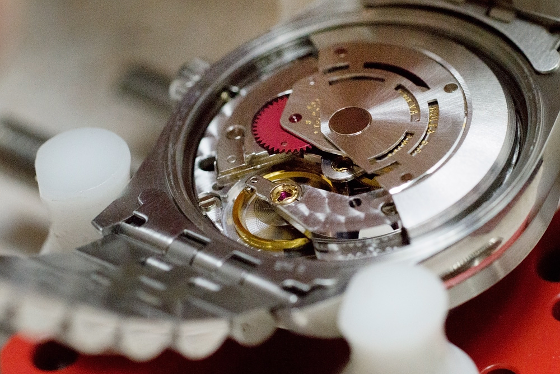
If you walk into your local watchmaker’s shop for a simple regulation adjustment, you’ll find it is not as easy on a Rolex as it is on many other watches. One needs to remove the balance wheel to safely access the screw that is either tightened or loosened to adjust the regulation. This is a downside to this piece, as it makes tweaking it more involved and more costly. BTW, Dave used the analogy of a figure skater spinning to explain how that adjustment is made. Arms (screw) out = the slower you go, Arms (screw) in = the faster you go. Many other watches have a regulation screw on the top plate, making it easier for a quick adjustment. There is oftentimes a downside to something being easier, as is the case here. Where most watches have easier access to the regulation screw, they often have pins touching the hairspring, which reduces accuracy. Not the case here.

Much to my surprise, Dave indicated that the lack of a date function on this particular timepiece is a benefit, in that it reduces time for maintenance as well as adding to its reliability. With that said, he acknowledged that Rolex “does date functions like no other.” Lastly, the beat regulator ensures that the balance wheel jewel is centered with the fork. Keeping good time is not only a function of regulation; amplitude is also required. Many watches need to have the balance wheel removed in order to adjust the beat via the hairspring collet. Not the case here. This proves an opportunity for less risky and safer adjustments, which reduces time and costs.
A rarity on this watch, along with many other Rolex models, is an upper plate bridge height adjustment screw. Not only does this make adjustments easier; it also makes it easy to ensure that the end shake is right.
Dave’s Technical breakdown:
Ease of Maintenance: (1= Easy 5=Difficult)
- Score = 2. Some options make this a relatively easy movement to maintain. Some of the fine adjustments aren’t as easy as on other watches.
Cost of Maintenance: 1-5 (1= Lower Cost 5=Higher Cost)
- Score = 3. It is relatively easy to work on, bringing down costs, but Rolex parts can be expensive. Some aspects to this particular piece may increase the price versus other like models with different features.
Frequency of Maintenance: (1= Longer Duration 5= Short Duration)
- Score = 2. While Dave suggests never waiting more than 3-5 years on any watch, he often sees Rolexes go much longer with minimal issues.
Build Quality: (1= High 5= Low)
- Score = 1. It is a solid case, bracelet, and movement that will last a few lifetimes.
I hope this article provides a unique perspective on this timepiece and encourages you to think about others in the same light. The great thing about this Rolex Air-King is that the model has remained relatively the same, aesthetically speaking, over the years, so you can snatch one up that is a few years old or one that is 20 years old, and have an amazing time piece for the rest of your life. So what do you think? Would you like to see more “Connoisseur vs. Watchmaker” reviews? Let me know.

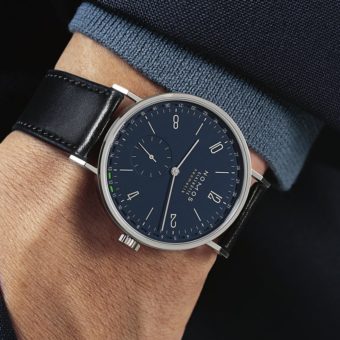



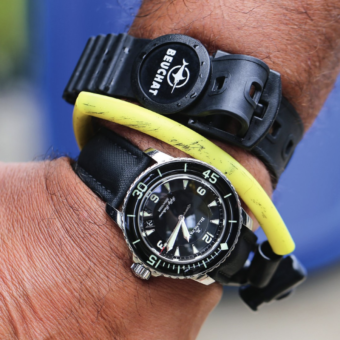

Hi
I’m looking an Air King and have a question regarding model numbers. For me, The reference 14010 has the etch marks around the outside of the dial and the 14000 doesn’t. Can you confirm this? Thanks. Marco
Little hint, the Air-King was never sold on a Jubilee. Always on an Oyster bracelet.
Great article, thanks! I really love the Air King, because of the great history of the Rolexes used by the Greatest Generation during ww2. I have my fathers wartime watch, a Rolex Oyster Observatory, but don’t want to wear it daily because of a lack of shock absorption, and parts are hard to get. I’m happy to wear my AK, and think of the legacy.
I have an AirKing with white face, it stopped working few years ago, it was purchase in 1998. My brother left it to me 2002, I wore it daily for few years, one day it stop working , how do I go about getting this service or fixed, local authorize jeweler dealers (So Cal)or direct Rolex dealers ?
Bet it looks great doing the 2 biggest activities in Rochester. Eating a Garbage Plate and moving snow. Enjoy in good health the AK!
so correct and timely considering the amount of snow received today!
Reliable and a part of me is the way I describe my Air King (model 1560, I believe) that I have worn daily for almost 48 years. It has been cleaned and adjusted only 5 or 6 times in all those years and keeps good time.
Appreciate the comment Tom!
I very much enjoyed this article. I like the format using a maintenance perspective. I found it interesting also, as I have been looking at vintage Air Kings for purchase.
More on the history of the watch would be greatly appreciated, with focus on which features make it unique. I look forward to your next review.
Thanks Sean! Look forward to seeing what you end up with!
Enjoyable article, found the two viewpoints interesting, let’s have some more!
I appreciate your feedback Fraser!
Are the watchmakers comments being reported correctly?
The bracelet is press fit together except for the last few screws, bracelet screws are almost always slotted so I’m not sure why either of these are notable features.
The calibre on the auto winding bridge is a feature? hmmm…
Watchmakers charge more for a black dial watch? Never heard of it, because most watchmakers use finger cots.
He takes the balance out to adjust timing? He really doesn’t know how to use a microstella wrench then.
“Arms screw out…” A microstella balance doesn’t have adjustable arms but adjustable nuts.
” Many watches need to have the balance wheel removed in order to adjust the beat via the hairspring collet.” Many? Almost all mechanical watches have an adjustable stud carrier that can be adjusted with the balance and cock installed.
Hey Chris, Thank you for reading our article. I was talking about the last few links of the watch and how I prefer screws to cotter pins. Yes slot screws are usually used for bracelets. Finger cots have little to do with the added difficulty of black dials. Cots remove the chance of finger prints but there is also dust, hair and soap residue to contend with. The major cost in overhauls is labor. Extra time to assure the dial is spotless can show up in an estimate even if it’s not itemized. As far as the microstella wrench I have found that the screws with age can become tight. Forcing tight regulating screws can be plenty to bend or break a pivot. I consider adjusting them without removing the balance a risk not worth taking. The caliber being easy to read is not a feature to the owner. It’s just a nice time saver for the watchmaker. The arms were not being mentioned about the watch. It was in reference to the example of a figure skater spinning. His or her arms move in or out to rotate faster or slower. Again thanks for your interest.
Very nice article and yes I would like to see some more of them!
I appreciate the feedback Ajrod!
Good article but minor point – you do realize that Rolex also made an Air King a with date feature that was only sold in Commonwealth countries like Canada, right?
Interesting point Bruce. I will be sure to look into that!